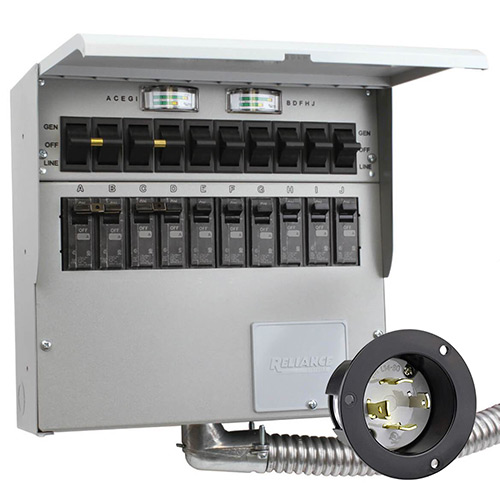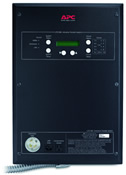Using a Transfer Switch to Power Your Home
How does a transfer switch work?
A transfer switch is usually installed near your circuit panel. The main breaker in the transfer switch moves the power source from utility to generator.
The house cannot be connected to both the generator and utility power at the same time - the main breaker transfers power from one source to the other.
The transfer switch also isolates your home from utility power. This stops the power from your generator from back-feeding down utility lines – a major hazard to utility workers. It also ensures that when utility power comes back on, the power won’t feed into your generator – which could damage the generator and start a fire.

The transfer switch also contains a number of circuits. You can assign each circuit to a different load. For example, you might want to power your furnace, well pump, refrigerator, and some lights. You can assign different circuits to power each appliance or room.
You may have more items on different circuits than the generator is capable of powering at the same time. However, using a transfer switch will make it easy to switch between different loads. Just turn one circuit off, and the other on. A transfer switch makes it easier and safer to manage your power usage and maximize your generator's effectiveness.
Types of Transfer Switches
Honda offers two types of transfer switches: manual and “smart.”
The manual types can transfer power with a large, single master breaker, and other versions use individual breakers.
The “Smart” transfer switch is also called a Universal Transfer Switch or UTS. The UTS will manage available power to whichever applications you set as a priority. This allows a smaller generator to power more critical appliances in your home. It makes it very easy to manage power effectively. Learn more about the Universal Transfer Switch here.
You will also need an inlet box installed. Typically these are installed on the exterior of your home to make it easy to plug in your generator in order to safely connect it to your home.


What should I expect during installation?
A licensed electrician should install the transfer switch and inlet box into your home and connect them with the main breaker box. Your Honda dealer can recommend a good electrician if you need assistance.
You will want to communicate with your electrician about your priorities for what you want to power. The electrician will assign those loads to the various circuits in the transfer switch.
Installation typically takes a few hours, depending on the complexity of your system. You may need a permit or inspection. Your electrician can advise you on these matters, or check with your local municipality regarding regulations near you.
How do I use a Transfer Switch?
Manual Switches:
Your owner's manual will have detailed instructions on using your transfer switch properly. Be sure to review it thoroughly before use.
When the utility power goes out:
- Turn off all the circuit breakers in the transfer switch to the off position.
- Move your generator outside. Connect the generator cord to the transfer switch or inlet box.
- Start the generator and let it warm up.
- Flip the main breakers in the transfer switch to the Generator position.
- Turn on the circuits you wish to power, one at a time. This will help to prevent the generator from being overloaded.
- Turn the main breakers in the transfer switch back to Utility Power.
- Turn on any other circuits that were turned off.
- Turn off the generator.
- Disconnect any cords.
Universal Transfer Switch
Simply start your generator and connect it to the transfer switch. The UTS will automatically detect power and adjust the circuits as necessary. When power is restored, disconnect your generator and turn it off.
Be sure to review your owner's manual thoroughly before use.










